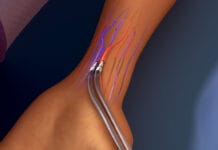One of the most challenging tasks dental hygienists face is taking the patient’s clinical diagnosis and trying to make it fit into an insurance code to successfully gain payment. Too often, the front office states that a code won’t prompt payment or that the insurance won’t cover a procedure.
One philosophy that we can follow is to treat patients based on their individual needs, not based off their insurance. The dental hygiene profession struggles with obtaining reliable, current information about insurance coding. This article focuses on solutions to these monetary insurance problems.
Challenge 1: RDHs Aren’t Insurance Experts
Although we are no stranger to “it’s not my job” to learn insurance coding, it is a hygienist’s job to provide treatment based on clinical evidence. Patients expect insurance plans to pay, and the dentist expects reimbursement. Being “code savvy” doesn’t mean you have to be an insurance expert. However, it is your responsibility to understand how the diagnosis fits into a code for reimbursement.
Solution: Spend some time at a team meeting really digging into the dental codes and creating a flow chart for your team members. This flow chart can show the process and code for how different types of patients and appointments fit into each code.
Having written appointment protocols will help each team member understand the office philosophy and why treatment plans evolve the way they do. Remember that much of what we do in the back is only recorded through documentation such as treatment notes, radiographs, and periodontal charting. Proper clinical notes and records of charting and bleeding on probing can only help the front office team when submitting additional information.
Don’t forget intraoral photos! Your insurance coordinator will love you if you have a photo of the MODL fracture on #18 that needs a preauthorization for a crown.
Challenge 2: Time Constraints Affect Proper Diagnosis
The clock in all dental operatories is evil. We race against it from the second we enter the door! Unfortunately, time and money seem to be placed in time blocks that must equal daily production in what sometimes feels like an assembly line.
While this is the world we live in, it is tricky to see 12 patients a day through the assembly line process. Not only does it wear us out, but disease gets missed!
Solution: If you feel like you are falling down this rabbit hole, help be the solution! It may be a difficult conversation (and you may need to acquire outside assistance from a consultant or coach) but have a team discussion about time and productivity. If you were allowed an extra 10 minutes…
Plead your case for file charting, photos, and better home care recommendations for your scheduled patients. This would allow for better patient rapport, perio charting, case presentation for restorative needs, and maybe time to explain the 6mm pockets on the lower right are in need of additional treatment ($$).
Even though it is a scary leap, those ten extra minutes fuel future treatment that will show up on the schedule. Patients do not like to feel unheard or rushed. They will appreciate the time you spent. Another option is to schedule with assisted hygiene. The flow of the appointment procedures can be easily adjusted, and you are able to see a few more patients per day.
Challenge 3: Case Presentation Imperfections
Walking the same walk and talking the same talk is a challenge in many offices. It takes time and training for the office team to present treatment philosophies in a similar fashion. Patients can be misled or see a decrease in value when told multiple or conflicting options.
Communication styles vary for person to person, and it is easy for both patients and providers to throw up their hands when faced with a challenging or complex treatment plan. This is where opportunities can be missed.
Solution: Presentation is everything! Take time for your team to brush up on “how” you are presenting treatment cases. Each member of the team must understand what the procedure is, why it is recommended, and what alternatives there are based on the dentist’s philosophy.
For example, have you ever planted the seed for a crown on #3 that has been filled three times prior to your dentist entering the scene? You know where this is going. The treatment plan for a needed crown is declined because their insurance won’t pay for it. But the co-pay is $50 for another MODBFL composite. For optimal success, the patient needs to understand the value of a crown vs. a cheap alternative that will fail over time, potentially leading to tooth loss.
This happens all too often when patients look at the dollars and cents before long-term solutions and financial investments. Therefore, it is also critical for all team members to understand the short- and long-term benefits to treatment planning. Once all team members recognize the what, why, and how of procedures and treatment, the rest is fun! Tools such as DISC assessments and exercises help identify personality types, behavior, and communication styles and is a win-win for the team. It then becomes easy to present to the patient on their level and offer options in a way they can accept information!
Case Example: 25-year-old male presents with generalized severe gingivitis 4mm generalized pseudo pocking. Last BWX are 3 years old. He is scheduled for a maintenance prophy for 50 minutes.
Option 1: BWX, prophy (ultrasonic, scale and polish), doctor exam (fractured tooth #3 MODBL), you verbally explain toothbrushing and scold him for not flossing and reappoint him in 6 months… (no perio charting)
Option 2: BWX, full perio charting with BOP (80 sites!), intraoral photos, OHI with individualized home care plan and power toothbrush, ultrasonic debridement, and doctor exam (you now can have the photo to recommend why a PFM crown in a better long term option vs. a large 4+ surface composite restoration)
Treatment plan: 4346 Scaling in the presence of gingival inflammation (thorough debridement completed same day)
Reappoint for four-week follow-up to include brief perio evaluation, prophy, polish, FL, and present treatment plan for PFM crown #3.
A few minutes to present your clinical findings and explain that based on the patient’s condition, this may be covered like a “regular cleaning.” But if they must come back before six months, they may expect some out-of-pocket expenses for the debridement alone.
This is no different than two prophy appointments (billed as D1110)
| Option 1 | Option 2 |
| D274 BWX $35
D1110 Prophy $95 D120 Periodic Exam $65 D1208 Fluoride $40
Total Production: $235 |
Visit 1
D274 BWX $35 D4346 Scaling in the presence of Gingivitis Inflammation $125 Perio Charting / Images
Visit 2 D1110 Prophy $95 D120 Periodic Exam $65 D1208 Fluoride $40
Total Production: $360, plus you have a presented a $900 treatment plan for a PFM #3 that has been accepted and scheduled on the dentist’s side. ($1,260) |
The real win is for this patient who is offered treatment and education he deserves based on clinical findings. The win for the RDH consists of: We have created time for ourselves. With this time, we can perio chart, take intraoral images and present restorative treatment, which will offer production to the dentist’s side. Then, we are able to reappoint the patient for the remaining service and to evaluate healing.
The solutions arranged for these day-to-day challenges are difficult; we recognize change as hard and time-consuming. For some of these options and training, your office may find a coach or consultant is best to help pave the way! Dental professionals want the very best for our patients. What seems to be just “coding” is really much more underneath! I challenge you to take a look at your protocols and see where you can help be the voice of change to help your team and your patients.
For more information about DISC or team training, visit www.springinnovative.com or email erika@springinnovative.com
Before you leave, check out the Today’s RDH self-study CE courses. All courses are peer-reviewed and non-sponsored to focus solely on pure education. Click here now.
Listen to the Today’s RDH Dental Hygiene Podcast Below:
Resources
- Blair, C. (2018). Coding with Confidence.
- DiGangi, P. (2019). Dentalcodeology. Retrieved from https://dentalcodeology.com/blog/how-many-d1110-d4346-can-we-bill/












